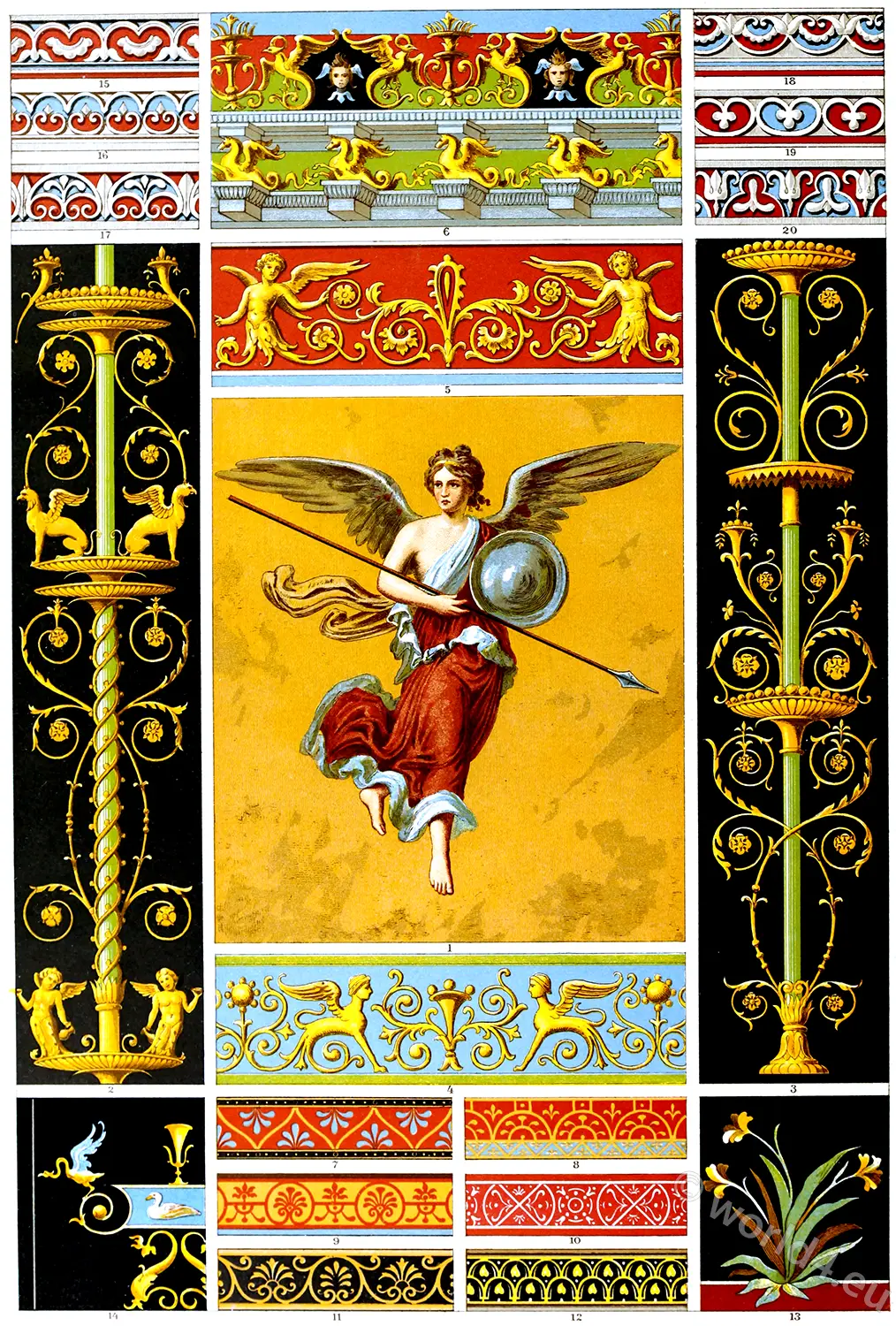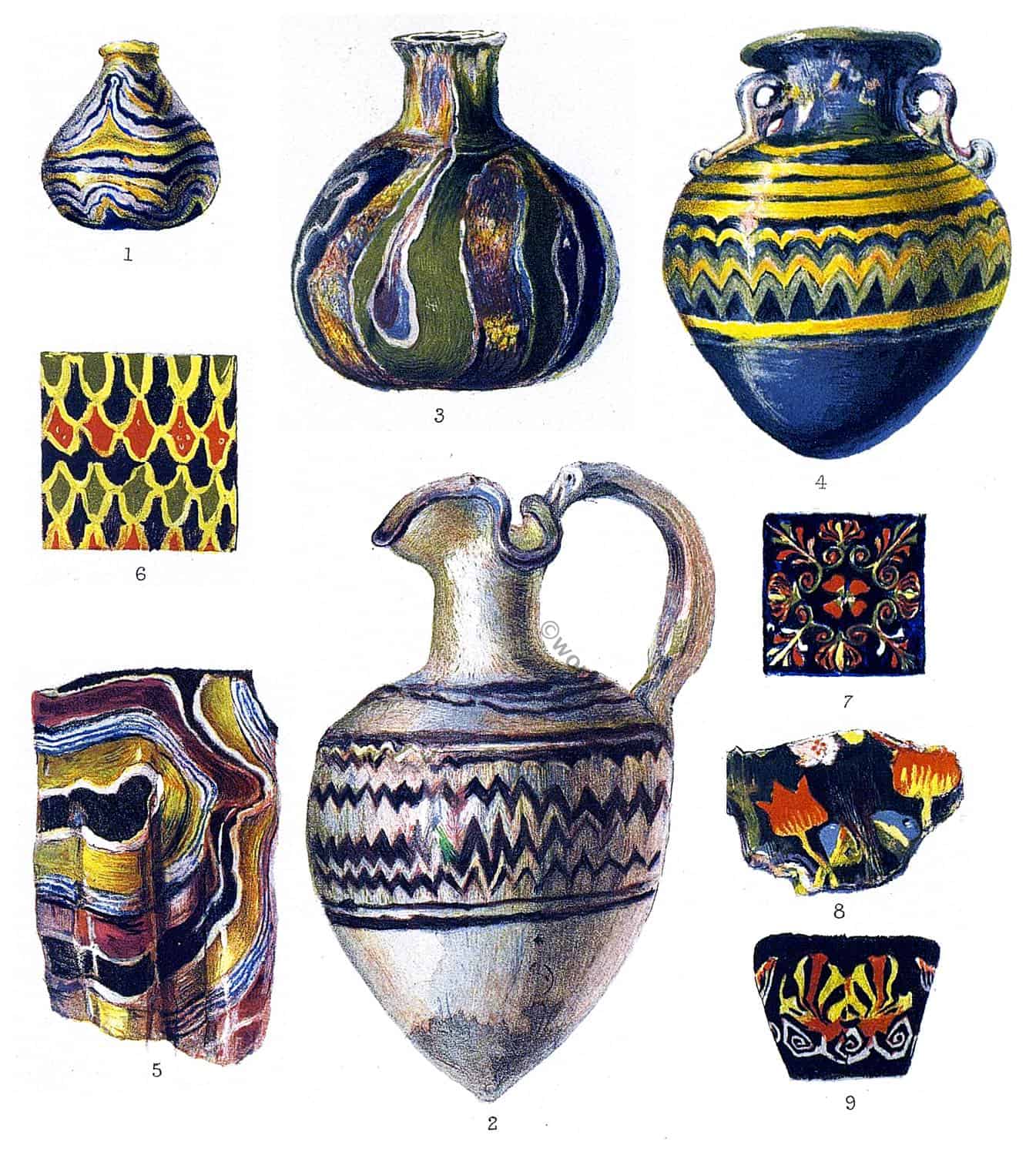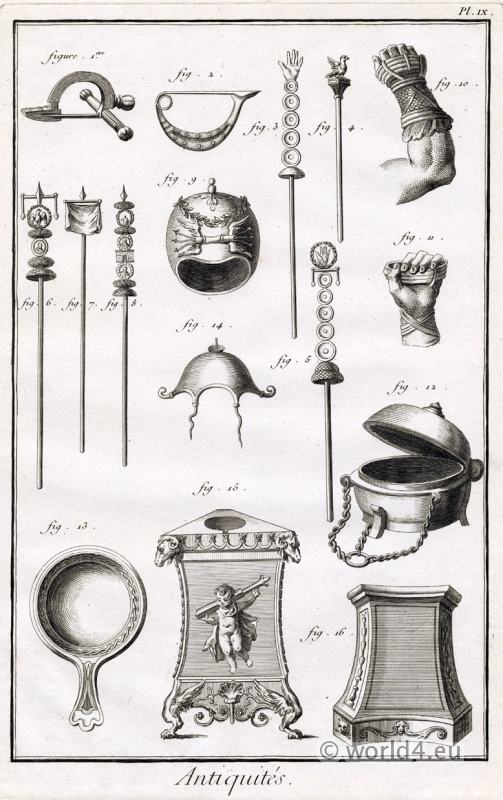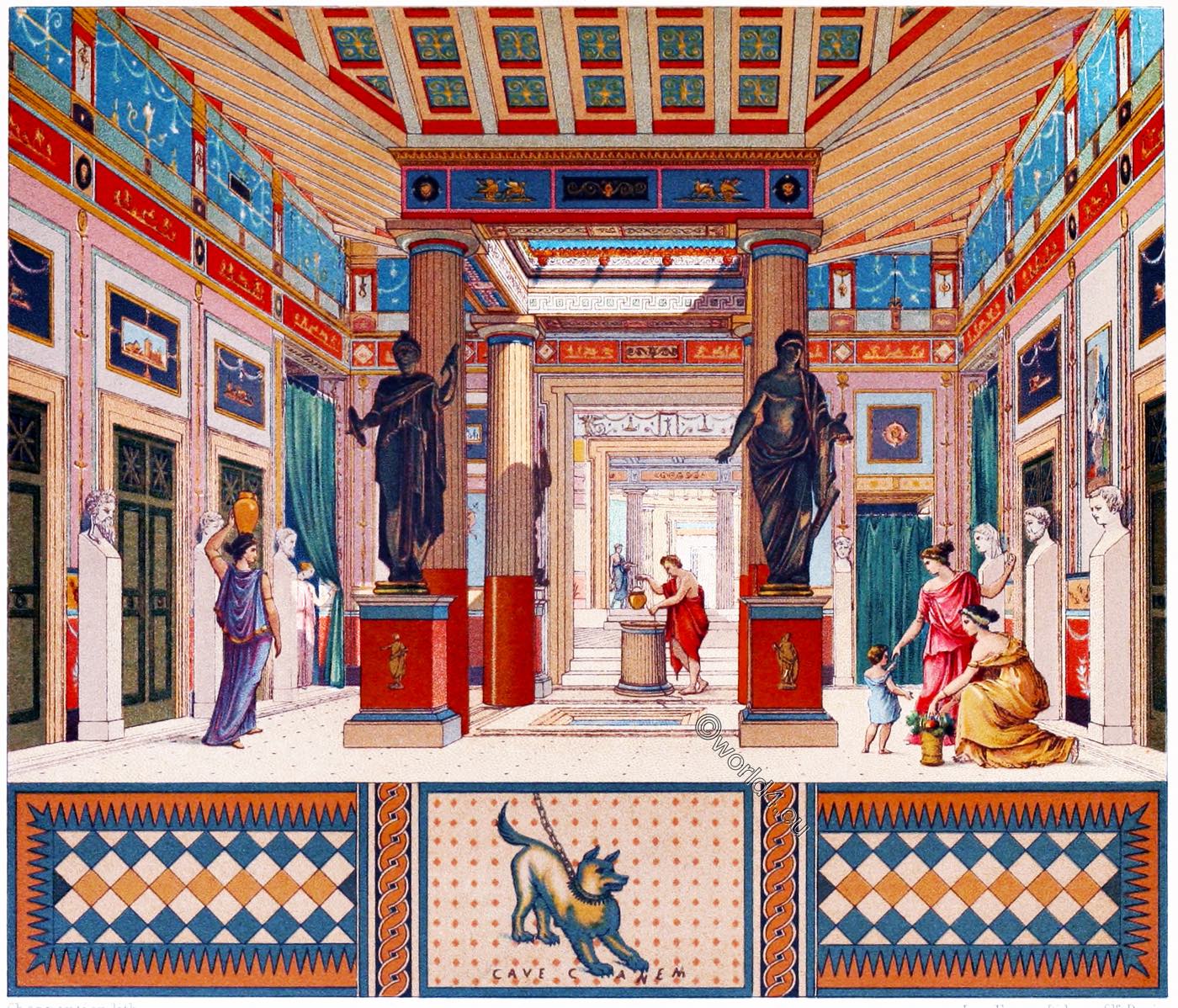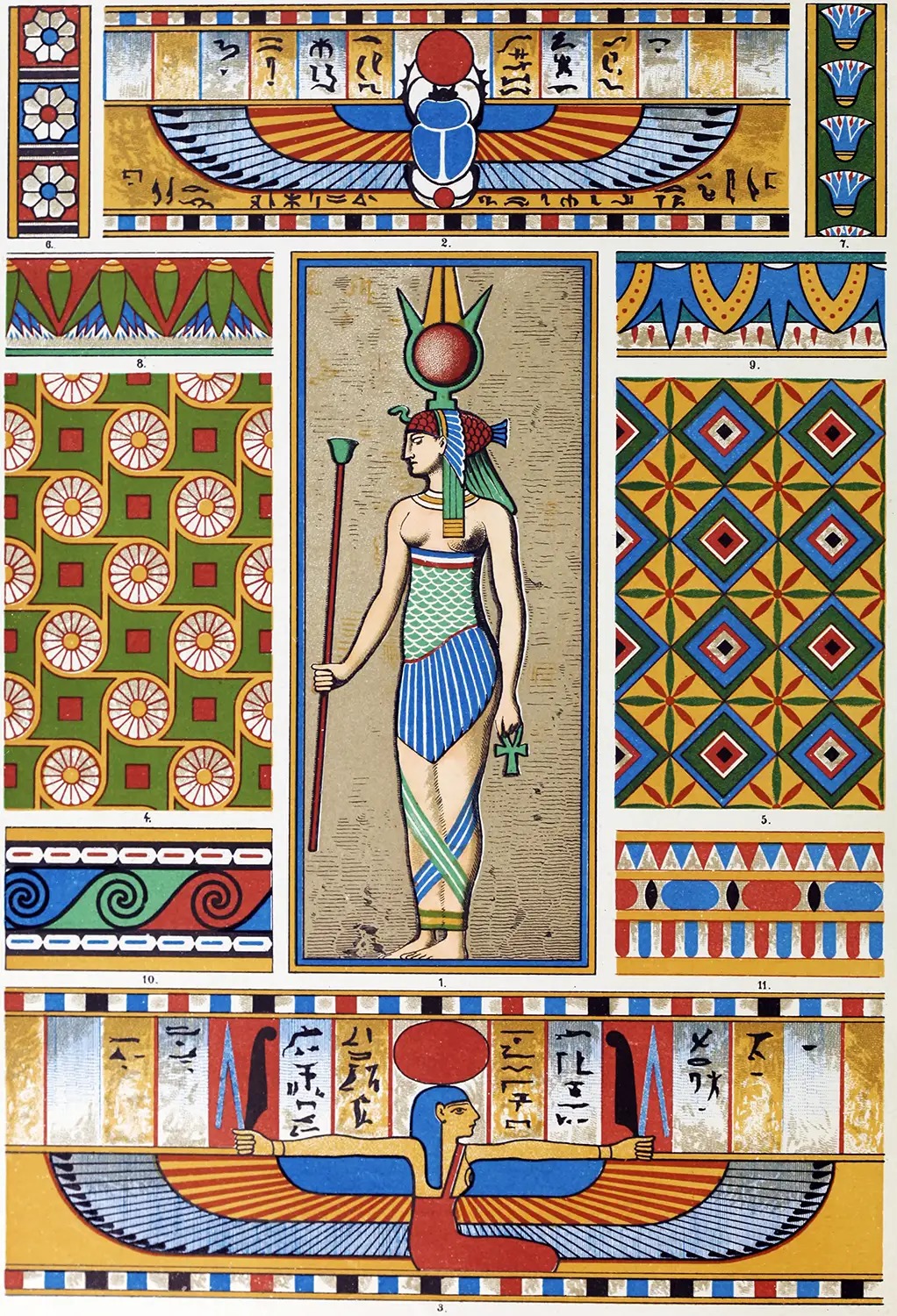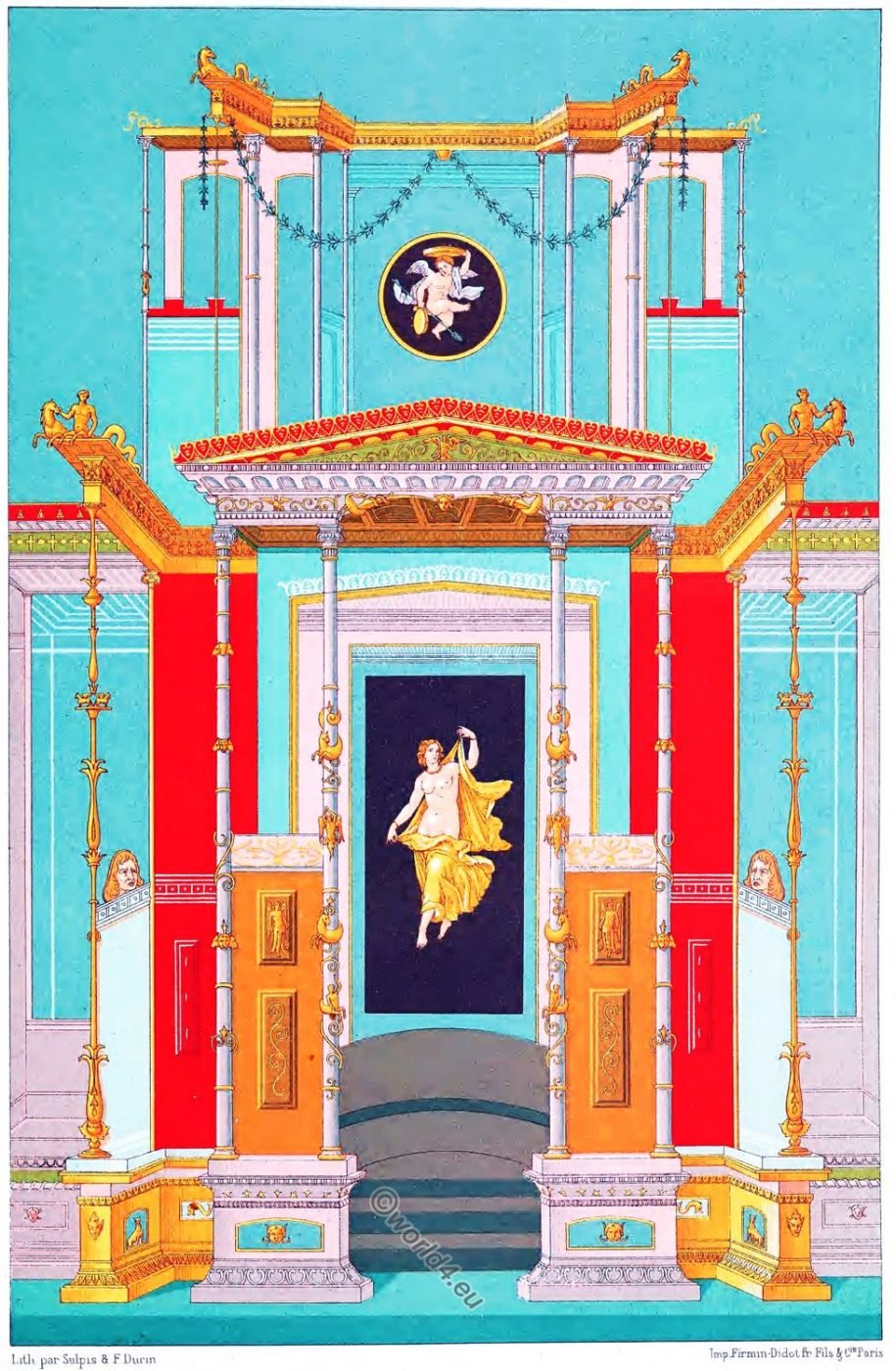
GRECO-ROMAN ANTIQUITIES. POMPEIAN STYLE.
DECORATIVE ARCHITECTURE.
THE purely decorative architecture, which we find represented on the inner walls of the apartments in Herculaneum and Pompeii, seems to belong less to the domain of reality than to that of fancy. Tradition attributes to the painter Lidius, in the time of Augustus, the invention of these architectural compositions, so elegant though so fantastic; and they are frequently intermingled with maritime scenes and landscapes, or animated by various figures. Executed by Greek artists, or by Etruscans working under their influence, they were highly appreciated by the Romans, who found in them the elegance and poetry of Greek art, in place of their own stereotyped forms of architecture, of which vaulted ceilings and arcades were the most striking characteristics.
The principal subject of the plate is a painted wall from the Casa delle Suonatrici (House of M. Lucretius), taken from the great work of ZAHN, Wilhelm (1800-1871): Les plus beaux ornements et les tableaux les plus remarquables de Pompei, d’Herculanum et de Stabiae Berlin: Georg and Dietrich Reimer, 1828-1829 (Die schönsten Ornamente und merkwürdigsten Gemälde aus Pompeji, Herkulanum und Stabiae.). It is considered one of the finest of its kind.
The two single figures have been added to the design; they do not exist in the original. One of them, that of the dancing girl, on the dark ground, was discovered in the Torre dell’ Annunziata. It is the finest of the twelve figures which were found in the same apartment, and is similar to those which Pliny calls Libidines. The little winged genius, with Bacchic attributes, which occupies the upper medallion, was found in the excavations at Cività.
These two figures are taken from the great work of Mazois. Les ruines de Pompei (4 vols folio; Firmin Didot).
Source: Polychromatic ornament by Auguste Racinet. London, H. Sotheran and Co., 1877.
Related
Discover more from World4 Costume Culture History
Subscribe to get the latest posts sent to your email.

